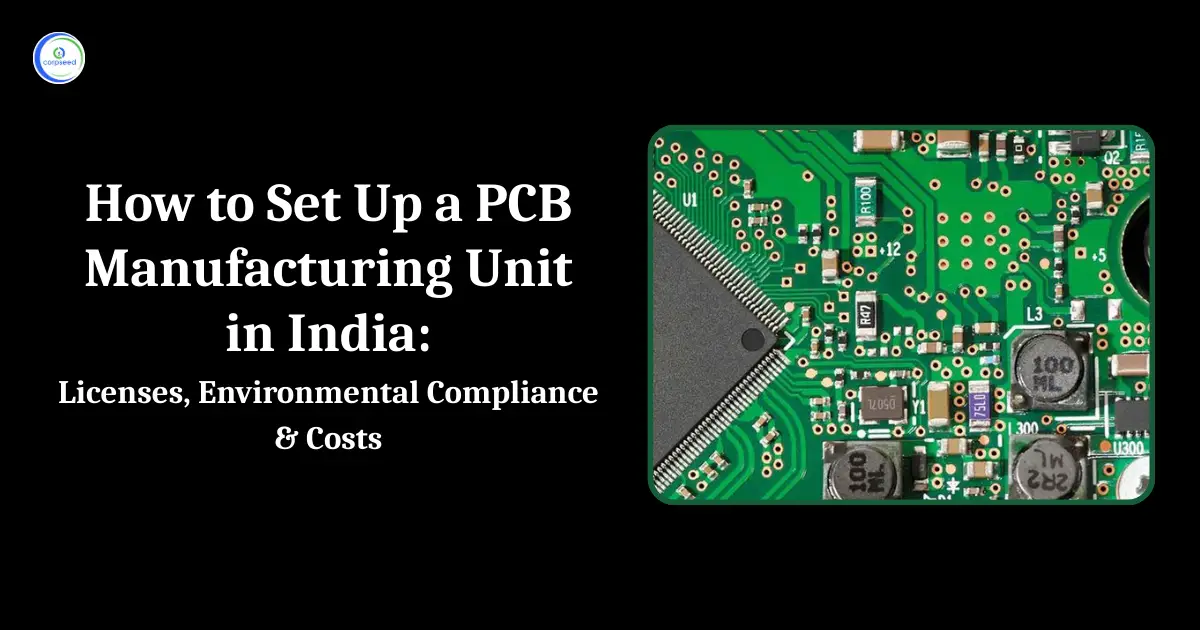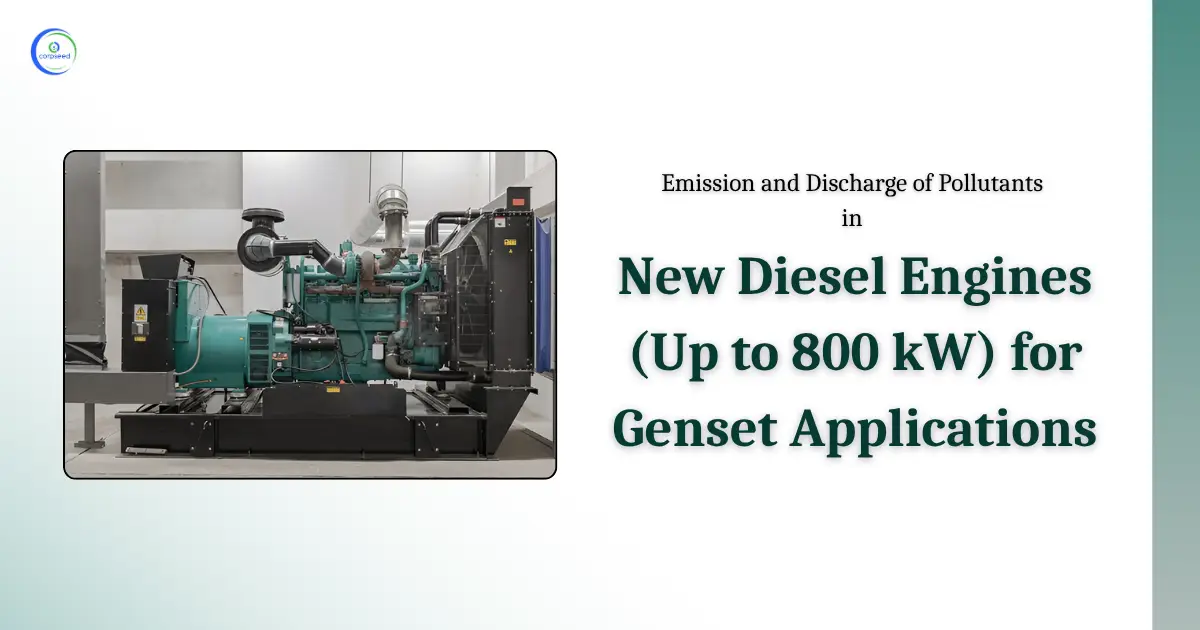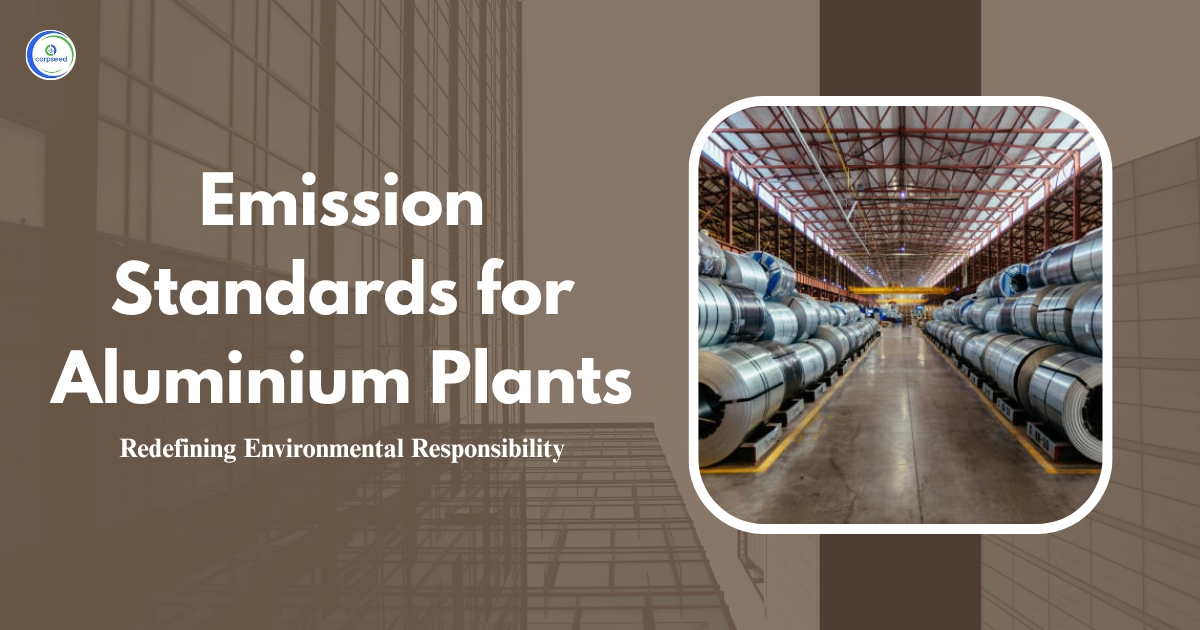The oil drilling and gas extraction industries play an important role in energy production, but they also pose significant environmental challenges. Activities such as drilling, processing, and refining release a variety of pollutants into the environment. To protect the environment and human health, the Indian Government has set strict standards for emission or discharge of environmental pollutants under the Environment (Protection) Rules, 1986.
Table of Contents
- Understanding Environmental Pollutants for the Oil Drilling and Gas Extraction Industry
- Importance of Compliance with Emission and Discharge Standards
- Effluent Discharge Standards for Onshore and Offshore Installations
- Guidelines for Gaseous Emissions
- Solid Waste and Drilling Waste Management
- Facility and Site Protection Requirements
- Conclusion
Understanding Environmental Pollutants for the Oil Drilling and Gas Extraction Industry
Oil and gas operations, whether onshore or offshore, are resource concentrated and pollution prone. They generate composite wastes including hazardous wastes, gaseous emissions, drilling fluids, and sludge that pose severe threats to land, water, and air quality if not properly managed. The processes of drilling, extraction, production and wastewater managing can result in the emission and discharge of environmental pollutants including hydrocarbons, heavy metals and highly salinized wastewater.
--------------Blog Contact Form-------------
Groundwater contamination from leak pits, air pollution from flaring, and marine degradation from offshore discharges are just a few instances of environmental hazards. To mitigate such risks, the government requires all oil and gas facilities to comply with strict environmental standards under the Environment (Protection) Rules, 1986. These standards are imposed in coordination with the Central Pollution Control Board (CPCB) and relevant State Pollution Control Boards (SPCBs), establishing a strong regulatory framework for pollution control.
Importance of Compliance with Emission and Discharge Standards
Compliance with environmental standards is not only a legal requirement, it also offers operational, economic, and social benefits. Compliance ensures safe operations and contributes to sustainability in the energy sector.
- Environmental Protection: Prevents long-term ecological degradation, protecting groundwater, marine ecosystems and terrestrial biodiversity from exposure to chemical pollutants, hydrocarbons and untreated waste.
- Public Health Safeguards: Minimizes the release of airborne toxins and contaminated water, reducing the risk of exposure to respiratory illnesses, waterborne diseases, and carcinogens for both workers and nearby communities.
- Legal Risk Reduction: It ensures that the industry stay compliant with CPCB and SPCB regulations, helping to avoid heavy penalties, legal action or project suspension due to environmental violations.
- Operational Efficiency: Implementing innovative treatment technologies and recycling systems helps mitigate raw material use, optimize energy, and lower disposal costs resulting in improved long-term cost efficiency.
- Corporate Responsibility and Market Advantage: Companies that prioritize environmental standards often gain a competitive power, as environmentally responsible operations are increasingly valued by stakeholders, investors, and consumers.
Effluent Discharge Standards for Onshore and Offshore Installations
The oil and gas industry must confirm that liquid wastes produced from drilling operations, production platforms, and processing units are treated and discharged in accordance with given environmental standards. These standards vary slightly for onshore and offshore operations due to the nature of the discharge locations and the related ecological sensitivity.
Onshore Installations (For Marine Disposal):
| On-Shore facilities(For Marine Disposal) | |
| pH | 5.5-9.0 |
| Oil & Grease | 10mg/1 |
| Suspended Solids | 100mg/1 |
| BOD (3days at 27°C) | 30mg/ 1 |
Note :
- For on-shore discharge of effluents, in addition to the standards prescribed above, proper marine outfall has to be provided to achieve the individual pollutant concentration level in sea water below their toxicity limits as given below, within a distance of 50 metre from the discharge point, in order to protect the marine aquatic life:
| Parameter | Toxicity limit, mg/l |
| Chromium as Cr | 0.1 |
| Copper,as Cu | 0.05 |
| Cyanide,as CN | 0.005 |
| Fluoride,as F | 1.5 |
| Lead, as Pb | 0.05 |
| Mercury, as Hg | 0.01 |
| Nickel, as Ni | 0.1 |
| Zinc, as Zn | 0.1 |
- Oil and gas drilling and processing facilities, situated on land and away from saline water sink, may opt either for disposal of treated water by on-shore disposal of by reinjection in abandoned well, which is allowed only below a depth of 1000 metres from the ground level. In case of re-injection in abandoned well the effluent have to comply only with respect to suspended solids and oil and grease 100 mg/l and 10 mg/l, respectively. For onshore disposal, the permissible limits are given below:
| S. No. | Parameter | On-shore discharge standards (Not to exceed) |
| 1. | pH | 5.5 - 9.0 |
| 2. | Temperature | 40°C |
| 3. | Suspended Solids | 100 mg/l |
| 4. | Zinc | 2 mg/l |
| 5. | BOD | 30 mg/ |
| 6. | COD | 100mg/ |
| 7. | Chlorides | 600 mg/l |
| 8. | Sulphates | 1000 mg/l |
| 9. | TDS | 2100 mg/l |
| 10. | %Sodium | 60 mg/l |
| 11. | Oil and Grease | 10 mg/l |
| 12. | Phenolics | 1.2 mg/l |
| 13. | Cyanides | 0.2 mg/l |
| 14. | Fluorides | 1.5 mg/l |
| 15. | Sulphides | 2.0 mg/l |
| 16. | Chromium(Cr+6) | 0.1 mg/l |
| 17. | Chromium (Total) | 1.0 mg/l |
| 18. | Copper | 0.2 mg/l |
| 19. | Lead | 0.1 mg/l |
| 20. | Mercury | 0.01 mg/l |
| 21. | Nickel | 3.0 mg/1 |
- Offshore Installations: These standards for the discharge of environmental pollutants are designed to protect sensitive ecosystems such as coastal waters, estuaries, and marine life areas from industrial impact.
- Treated effluent must have oil content below 40 mg/l for 95% of observations and should never exceed 100 mg/l.
- Compliance is determined using three 8-hourly grab samples daily, with the average oil content assessed.
Guidelines for Gaseous Emissions
Oil drilling and extraction emit gases from diesel generator (DG) sets, flaring operations, and chemical processing units. These emissions are required to be strictly controlled under the Environment (Protection) Act, 1986 to prevent air pollution and serve air quality standards.
DG Sets: The DG sets used at drilling sites and production centres should adhere with the emission standards stated under the Environment Protection Act. These generators used to power supply in remote locations, these generators emit nitrogen oxides (NOx), particulate matter (PM), and unburnt hydrocarbons, which can worsen air quality if left unchecked.
Flaring Operations: Cold venting of gases is firmly prohibited due to the uncontrolled release of volatile organic compounds (VOCs).
- Elevated flaring is compulsory to limit human and environmental exposure to toxic gases.
- If ground flaring is necessary, it must consist of:
- An RCC pit with refractory brick walls (minimum 5 meters high) to contain the flare.
- A 100 meter green belt around the flare area to absorb heat and glare.
- An enclosed ground flare system must be considered where a green belt is not feasible.
- Stack height for elevated flares should be at least 30 meters, ensuring that emissions do not exceed the permissible ground-level concentration (GLC).
Burning of Effluent: Open-pit burning of effluents is strictly prohibited at any stage, as it adds to uncontrolled emissions and increases fire risk.
Solid Waste and Drilling Waste Management
Solid waste management is crucial in oil drilling operations because of the volume and toxicity of the materials involved. These comprise drill cuttings (DC), drilling fluids (DF), oily sludge, and chemical residues.
- Disposal of Drill Cutting and Drilling Fluids for On-shore Installations: Onshore waste management includes the careful collection, treatment, and disposal of all waste materials associated with drilling.
- Water-Based Mud (WBM) cuttings should be washed and stored in lined pits with leachate collection systems to stop groundwater contamination.
- Oil-Based Mud (OBM) and Synthetic Based Mud (SBM) may be used only in particular geological conditions and must contain <1% aromatic hydrocarbons.
- Chemical additives in drilling fluids must be biodegradable and non-toxic (LC50 > 30,000 mg/l).
- Wastewater and wash water must adhere with the notified standards and oil content should be <10 gm/kg before disposal.
- After filling, disposal pits must be lined, capped, and covered with native soil sloped for rainwater runoff.
- Alternate disposal methods such as bioremediation, land farming, incineration, or reinjection can be used after approval from the SPCB.
- Disposal of Drill Cutting and Drilling Fluids for Off-shore Installations: Due to their proximity to sensitive marine ecosystems, offshore drilling units are subject to even stringent regulations.
- Diesel-based mud is banned.
- Reuse of WBM/OBM/SBM is encouraged unusable OBM must be transported onshore for safe disposal.
- Drill cuttings with oil content <10 gm/kg can be discharged at sea, but only alternatingly and at a rate of 50 bbl/hr/well to confirm proper dilution.
- Disposal is prohibited in sensitive marine areas identified by environmental authorities.
- Treated wash water must meet marine discharge standards before release, and all discharges must be closely monitored.
- The use of any new eco-friendly drilling fluid technology must be approved in advance by the MoEFCC.
Also Read: What are the Standards for Emission or Discharge of Environmental Pollutants for Industrial Boiler
Facility and Site Protection Requirements
In addition to direct pollution control, oil and gas sites should implement preventive measures to avoid secondary environmental risks:
- Liquid wastes should never be discharged unless they fulfill the minimum national norms.
- Storage facilities should be secure and not prone to flooding or leakage.
- Sludge from evaporation pans must be burnt or disposed of in accordance with hazardous waste management guidelines.
- The site must be surrounded and secured to prevent entry by wildlife, livestock and unauthorized persons.
Conclusion
The oil and gas industry in India functions under the most comprehensive framework to regulate emissions and discharges of environmental pollutants. Through stringent standards, rigorous waste management, and continuous monitoring, the sector is expected to reduce its environmental impact while meeting the nation’s energy requirements. Ensuring compliance with CPCB and SPCB standards not only sustains legal and environmental responsibilities but also aligns with the wider goals of sustainable industrial development.
As environmental concerns develop globally, future readiness will depend on a commitment to pollution control, responsible drilling practices, and environmental stewardship the foundations of a clean and sustainable oil and gas industry.
This portion of the site is for informational purposes only. The content is not legal advice. The statements and opinions are the expression of author, not corpseed, and have not been evaluated by corpseed for accuracy, completeness, or changes in the law.
BOOK A FREE CONSULTATION
Get help from an experienced legal adviser. Schedule your consultation at a time that works for you and it's absolutely FREE.







_Corpseed.webp)
.webp)
